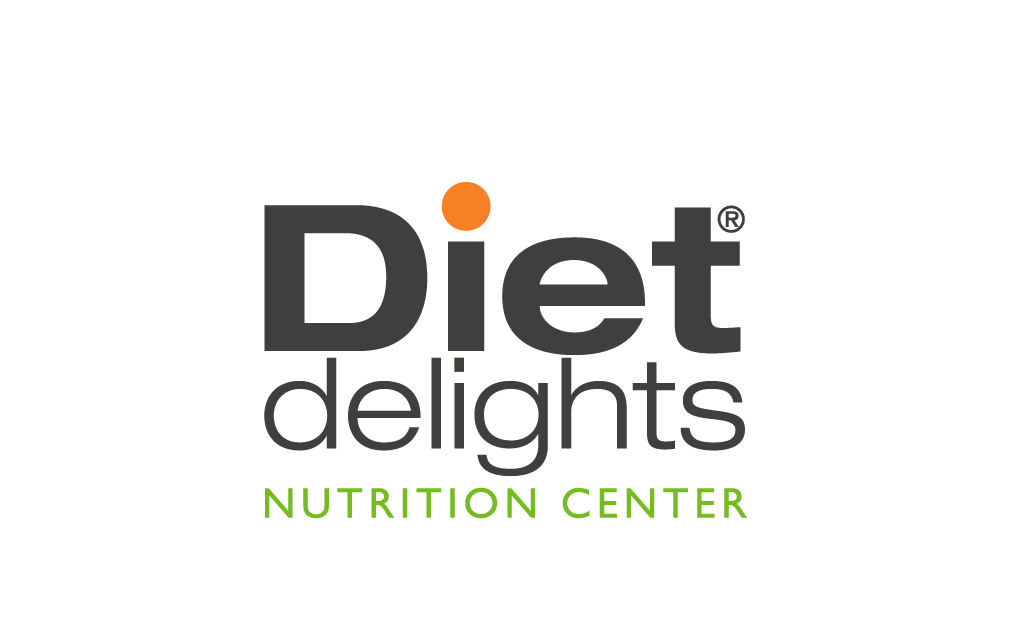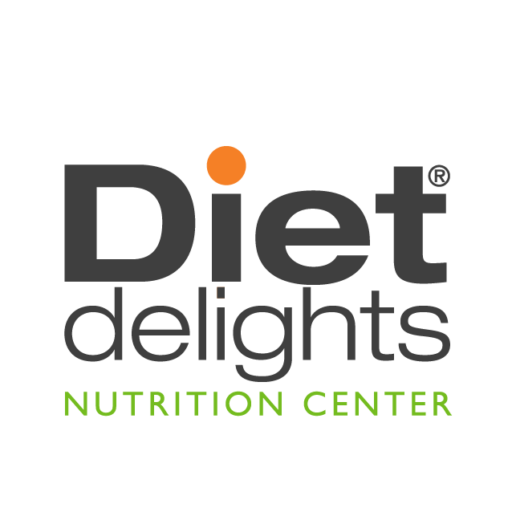blog

Navigating a gluten-free lifestyle can feel overwhelming—especially with myths floating around about bland meals and limited choices. At Diet Delights, we’re here to flip the script. Whether you’re managing celiac disease, dealing with gluten sensitivity, or simply exploring healthier eating, gluten-free options can be flavorful, nutrient-rich, and satisfying. Let’s break down the essentials and show you how to thrive gluten-free without sacrificing taste!
What Does “Gluten-Free” Really Mean?
Gluten is a protein found in wheat, barley, rye, and their derivatives. For some individuals, consuming gluten triggers immune reactions—as seen in celiac disease—or digestive discomfort in those with non-celiac gluten sensitivity. A gluten-free diet eliminates these specific grains entirely, yet does not mean sacrificing variety or essential nutrition.
Common Gluten-Containing Foods to Avoid:
Bread, pasta, and baked goods made with wheat flour
Beer, malt beverages, and certain soy sauces
Processed items like soups, sauces, and snacks (always check labels!)
Who Benefits from Gluten-Free Options?
Celiac Patients: For these individuals, a strict gluten-free diet is medically necessary to prevent intestinal damage.
Gluten-Sensitive Individuals: Eliminating gluten can reduce bloating, fatigue, and brain fog.
Health-Conscious Eaters: Many choose gluten-free diets to explore diverse, whole-food-based nutritional choices.
Myth Buster: “Gluten-free equals weight loss.” Not necessarily! While reducing processed carbs can support some health goals, gluten-free junk foods—like cookies and chips—can still derail your journey. The key is focusing on nutrient-dense gluten-free choices.
Top 10 Nutrient-Packed Gluten-Free Foods to Stock Up On
At Diet Delights, we prioritize whole foods that naturally lack gluten. Here’s our go-to list:
Quinoa
Why: A complete protein offering all nine essential amino acids.
Try: Toss it into a vibrant salad, create a hearty breakfast bowl, or serve it as a rice substitute.
Sweet Potatoes
Why: High in fiber, vitamin A, and antioxidants.
Try: Roast them into wedges, mash them as a side dish, or incorporate them into gluten-free pancakes.
Almond Flour
Why: Rich in healthy fats and excellent for gluten-free baking.
Try: Use it for cookies, bread, or as a crispy coating for baked chicken.
Lentils
Why: Packed with plant-based protein and iron.
Try: Prepare a warming lentil soup, stew, or create a delicious lentil-based veggie burger.
Brown Rice
Why: A versatile, naturally gluten-free grain that’s high in fiber and essential minerals.
Try: Serve as a base for stir-fries, pair with lean proteins, or mix into casseroles.
Chickpeas
Why: Provides a rich source of protein, fiber, and essential nutrients.
Try: Blend into hummus, toss into salads, or roast for a crunchy snack.
Buckwheat
Why: Despite its misleading name, buckwheat is gluten-free and boasts a complete amino acid profile.
Try: Use it in porridge, pancake mixes, or as a substitute grain in side dishes.
Cauliflower
Why: This cruciferous vegetable is incredibly versatile and low in calories, yet high in vitamins.
Try: Mash it as a low-carb alternative to potatoes, roast it, or turn it into a creamy soup.
Spinach
Why: A powerhouse loaded with iron, calcium, and vitamins A and C.
Try: Include in smoothies, salads, or sauté as a nutritious side dish.
Avocado
Why: Provides healthy fats, fiber, and essential vitamins—making it a perfect addition to many meals.
Try: Mash into guacamole, slice into salads, or simply spread on gluten-free toast.


How to Build a Balanced Gluten-Free Meal
A common fear with gluten-free diets is missing out on essential nutrients. Here’s our foolproof formula for balanced meals:
Protein: Lean options like chicken, fish, tofu, or legumes.
Healthy Carbs: Alternatives such as quinoa, brown rice, buckwheat, or gluten-free oats.
Veggies: An array of leafy greens, cruciferous vegetables, and colorful peppers.
Fats: Beneficial choices like avocado, olive oil, nuts, or seeds.
Sample Day of Eating:
Breakfast: A spinach omelet paired with gluten-free toast made from almond flour.
Lunch: Grilled chicken salad mixed with quinoa, roasted veggies, and a tangy tahini dressing.
Snack: Fresh apple slices complemented by a serving of almond butter.
Dinner: Baked salmon served with mashed cauliflower and a side of steamed broccoli.
Busting 5 Gluten-Free Myths
“Gluten-Free Diets Are Low-Carb”
Not true! Naturally gluten-free foods like rice, potatoes, and fruit are rich in carbohydrates.“It’s Too Expensive”
You can focus on whole foods such as veggies, eggs, and legumes, which are both nutritious and budget-friendly.“Cross-Contamination Isn’t a Big Deal”
For celiac patients especially, even trace amounts of gluten from crumbs matter. Always maintain clean surfaces and utensils.“Gluten-Free Means Tasteless”
With the right blend of spices, herbs, and creative cooking, meals can be incredibly flavorful—think coconut curry or zesty zucchini noodles!“You Can’t Eat Out”
Many restaurants now offer dedicated gluten-free menus. Don’t hesitate to ask questions about ingredients and preparation methods.
Hidden Sources of Gluten to Watch Out For
Gluten can sneak into your diet from unexpected places. Always check labels for:
Sauces & Condiments: Items like soy sauce, salad dressings, and marinades might contain gluten.
Processed Meats: Sausages, deli meats, and meatballs can sometimes include hidden wheat-based additives.
Seasoning Mixes: Some blends incorporate wheat flour as a stabilizer.
Oats: Unless you’re purchasing certified gluten-free oats, they may be cross-contaminated during processing.
Pro Tip: Look for packaging certifications like “Certified Gluten-Free” or “GFCO” to ensure safety.
How Diet Delights Makes Gluten-Free Living Effortless
Struggling with meal prep? Diet Delights is here to help with a variety of services:
Customizable Meal Plans: Tailored to your specific dietary needs whether you prefer vegan, keto, or paleo-friendly options.
Ready-to-Eat Meals: Enjoy dishes like our gluten-free Moroccan chickpea stew, zucchini lasagna, or coconut flour pancakes.
Snack Packs: Savor crunchy roasted chickpeas, seed crackers, and delightful dark chocolate energy balls.
Expert Guidance: Our nutritionists are available to answer your questions and fine-tune plans based on your progress.
Gluten-Free Swaps for Your Favorite Foods
Missing your traditional pasta or baked goods? Try these simple substitutes:
Pasta: Swap with brown rice pasta, lentil pasta, or even spiralized zucchini noodles.
Bread: Opt for almond flour bread, cassava flour tortillas, or sweet potato toast.
Baking: Use alternatives such as coconut flour, tapioca starch, or trusted gluten-free baking mixes.
Soy Sauce: Replace with tamari (a gluten-free soy sauce) or coconut aminos for that perfect umami flavor.
FAQs About Gluten-Free Diets
Q: Can I get enough fiber on a gluten-free diet?
A: Absolutely! Focus on fruits, vegetables, chia seeds, and gluten-free whole grains like quinoa to maintain healthy fiber intake.
Q: Is gluten-free the same as grain-free?
A: No. While gluten-free diets cut out specific grains like wheat, barley, and rye, you can still enjoy other grains such as rice, corn, and certified gluten-free oats.
Q: How do I handle social gatherings?
A: Consider bringing a gluten-free dish to share, communicate your dietary needs to the host ahead of time, or eat a little beforehand to ensure you’re not left hungry.
Success Story: A New Lease on Life
Meet Sarah, a Diet Delights client from Doha. Sarah struggled with chronic fatigue and digestive issues for years. After switching to our personalized gluten-free meal plan, she experienced increased energy levels, clearer skin, and a renewed passion for cooking. “I never realized how many delicious options existed—it’s transformed my health!” she says.
Final Thoughts: Embrace the Possibilities
Going gluten-free isn’t about restriction—it’s an opportunity to explore new flavors, improve your overall health, and discover creative recipes that excite your palate. At Diet Delights, we’re committed to making your journey delicious, nutritious, and stress-free.
Ready to dive in? Explore Our Gluten-Free Meal Plans or chat with our expert team for personalized advice!
Subscribe for Amazing Offers, Free Recipes and Newsletters
Quick Links
Our Contact
- 103, Al Nuaija Street, Al Hilal Area, Doha, Qatar
- info@dietdelights.com.qa
- +974 4419 6441
our timings
- Sunday to Thursday - 9am to 7pm
- Friday Closed

